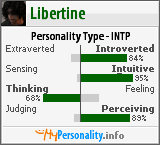Astronomers looking for intelligent extraterrestrial life and habitable Earthlike planets have narrowed down their focus to ten star systems.
The criteria for their choices were naturally systems that are similar to our own, with the stars being about the same age, composition, and size of our own, which would make the existence of Earthlike planets orbiting them more likely.
Margaret Turnbull of the Carnegie Institution of Washington released her "top 10" list of potential stars to the American Association for the Advancement of Science. The stars on the list will be the first targets of NASA's Terrestrial Planet Finder, a system of two orbiting observatories scheduled for launch in 2014 and 2020.
The stars on the list are:
Five top candidate stars for those listening for radio signals from intelligent civilizations:
1. beta CVn: A sun-like star about 26 light-years away in the constellation Canes Venatici (the Hound Dogs).
2. HD 10307: A star about 42 light-years away.
3. HD 211415: About half the metal content of sun and a bit cooler, this star is in just a little farther away than HD 10307.
4. 18 Sco: The star, in the constellation Scorpio, is almost an identical twin to our sun.
5. 51 Pegasus: In 1995, Swiss astronomers reported they had detected the first planet beyond our solar system in orbit around 51 Pegasus.
Five candidates for those trying to detect Earth-like planets in orbit around nearby stars:
1. epsilon Indi A: A star only about one-tenth as bright as the sun. It is about 11.8 light-years away in the constellation Indus.
2. epsilon Eridani: A star somewhat smaller and cooler than our sun, located about 10.5 light-years away in the constellation Eridanus (the River).
3. omicron2 Eridani: A yellow-orange star about 16 light-years away, roughly the same age as our sun.
4. alpha Centauri B: Long considered one of the places in the Milky Way that might offer terrestrial conditions. This star is part of a triple star system.
5. tau Ceti: A G-class star with the same brightness category as our sun.
Several years ago, I read that the fictional planet Vulcan from Star Trek was supposed to be located in the Epsilon Eridani system. I think it would be quite appropriate if fiction were to become partially fact in this instance.
I just hope to live long enough to see some of this research bear fruit.
Tuesday, February 21, 2006
Subscribe to:
Post Comments (Atom)




No comments:
Post a Comment